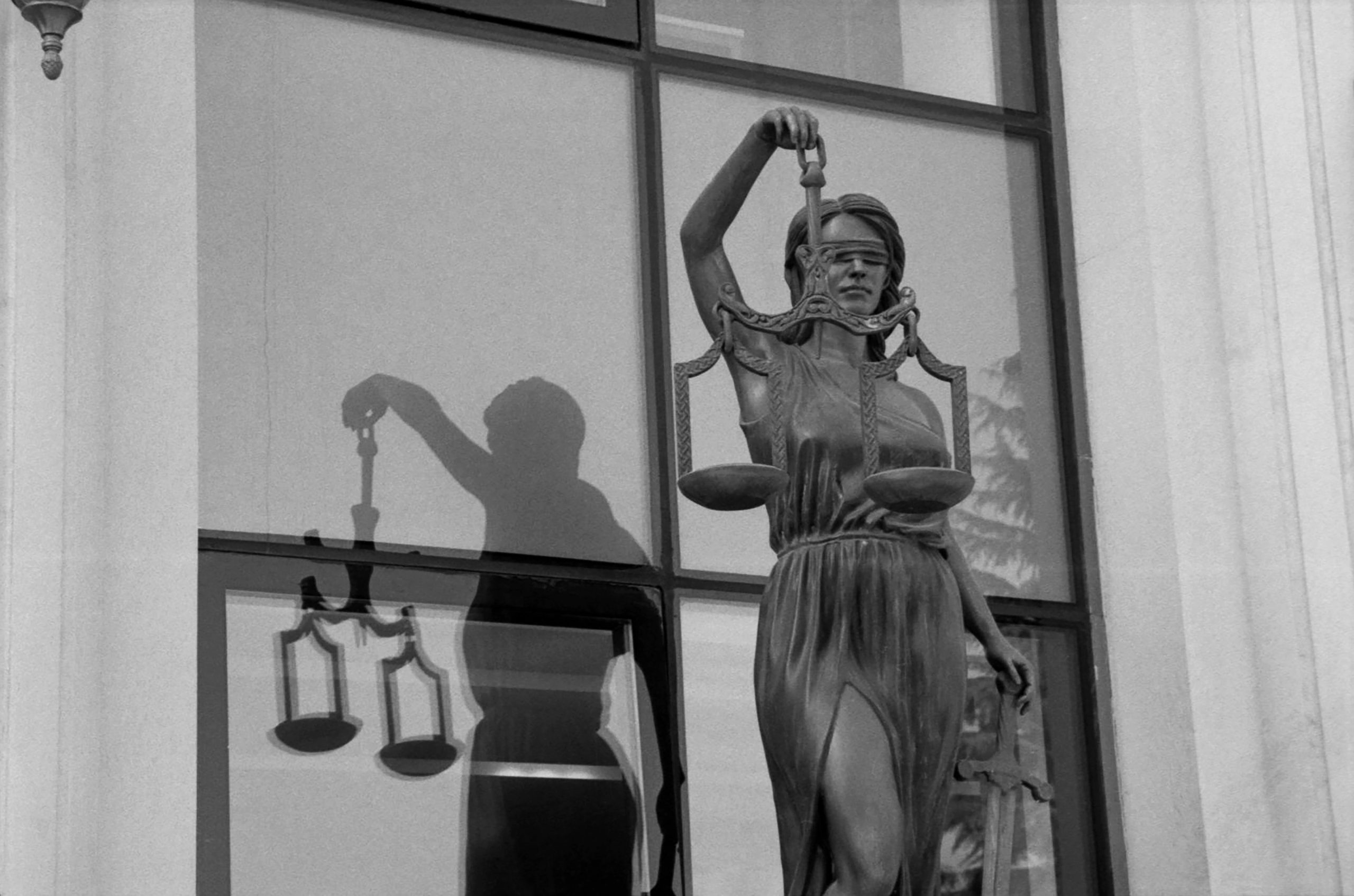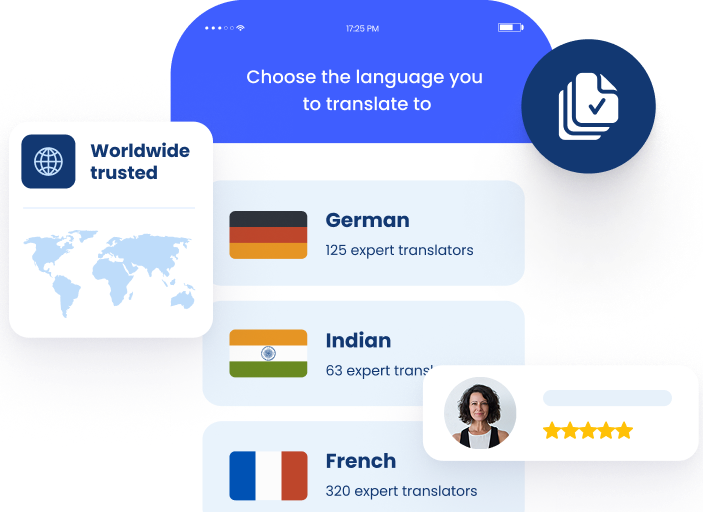What is a Court Interpreter?
In the American justice system, the guarantee of a fair trial collapses if a defendant, witness, or litigant cannot understand what is said in court or cannot make themselves understood. The court interpreter exists to safeguard this constitutional right. Far more than a bilingual convenience, a court interpreter is a sworn officer of the court who ensures that individuals with Limited English Proficiency (LEP) stand on equal footing with English speakers.
A court interpreter’s role demands far more than conversational fluency. It requires mastery of legal terminology, the ability to render language with precision under immense time pressure, and strict adherence to professional ethics.
Mistakes introduce errors in the legal process and trigger appeals, mistrials, or wrongful convictions. This article explains what court interpreters do, why certification is critical, where their services are most needed, and why this profession is among the most demanding in law.

The Role of Court Interpreters in Legal Proceedings
The role of a court interpreter spans several contexts. It involves specific duties in trials and hearings, rigorous certification requirements, and a clear distinction from translators and other language professionals.

What court Interpreters do in trials and hearings
A court interpreter functions as a neutral conduit, rendering speech from one language into another without omissions, additions, or alterations. They preserve the speaker’s tone, register, and even errors, ensuring the official record mirrors the original statement.
They employ three primary modes of interpretation:
- Simultaneous interpreting: Speaking almost in tandem with the source speaker, typically used when an LEP defendant listens to testimony or jury instructions. This preserves trial flow while safeguarding comprehension.
- Consecutive interpreting: Relaying speech after short pauses, required when LEP participants testify or are questioned. The pauses allow for maximum accuracy in the record.
Sight translation: Reading written documents in one language and speaking them aloud in another. Common examples include plea agreements or evidence exhibits.
Equally important is what interpreters cannot do. They cannot explain legal concepts, give advice, or have private conversations with parties. Their work is confined strictly to language conversion.
Why courts require certified interpreters
Certification is the mechanism courts use to ensure both constitutional compliance and defensible records. Without it, due process is at risk.
Court interpreters help with:
- Constitutional grounding: The Court Interpreters Act of 1978 addressed systemic due process violations in federal courts by mandating qualified interpretation for LEP participants.
- Gold standard for quality: Certification validates mastery of legal terminology, all three interpreting modes, and ethical obligations. It is not about bilingualism but tested professional competence.
- Risks of unqualified interpreters: Using friends, family, or untrained staff often results in paraphrasing, inaccuracies, or subjective intrusions. A misinterpretation such as shifting “I suppose” into “I admit” can devastate a case.
Appeal-proofing: Courts insist on certified interpreters to reduce mistrials and overturned verdicts. If a non-certified interpreter is used where a certified one was available, it can create grounds for appeal.
Key differences between court interpreter and translator
Interpreters and translators are not interchangeable. Their work differs in medium, environment, skills, and expected outputs.
- Medium: Interpreters handle spoken or signed language live. Translators work with written text.
- Environment: Interpreters perform in real-time under pressure, including trials, depositions, or interviews. Conversely, translators can work offline with time to revise.
- Skill sets: Interpreters rely on memory, active listening, and public speaking. Translators emphasize analytical writing, research, and editing.
Output: Interpreter output is immediate and ephemeral; translators deliver polished documents.
Certification and Training for Court Interpreters
The U.S. system is fragmented in that the federal certification is limited, while most interpreters are certified at the state level.
- Federal certification: This is Administered by the Administrative Office of U.S. Courts, the Federal Court Interpreter Certification Examination (FCICE) is regarded as the pinnacle credential, though only available for a few languages.
- State certification: The National Center for State Courts (NCSC) provides standardized exams adopted by over 40 states. Reciprocity across some jurisdictions allows wider practice.
- Typical process: Candidates must pass a written exam, complete orientation, pass a rigorous oral exam (70% minimum in each section), and undergo a background check.
- Certified vs. registered: High-demand languages have full oral exams leading to “certified” status. For languages of lesser diffusion, interpreters may only achieve “registered” status through written and proficiency interviews.
This distinction matters, meaning attorneys working with rare languages must understand that “registered” may be the highest available credential.
When Court Interpreting Services are Needed
The need for interpreters extends across criminal, civil, and out-of-court contexts.
Common legal situations that require interpreters
Under Title VI of the Civil Rights Act, courts receiving federal funding must ensure language access across all proceedings.
- Criminal: Police interrogations, arraignments, grand juries, plea hearings, trials, and sentencing all require qualified interpretation.
- Civil: Family law disputes, personal injury depositions, landlord-tenant hearings, immigration and asylum cases, and mental health proceedings rely heavily on interpreters.
Out-of-court: Attorney-client meetings, depositions, mediations, arbitrations, and probation interviews all carry legal consequences and require accurate interpretation.
Can you get a court interpreter on short notice?
Availability is a persistent challenge.
- Best practice: Request interpreters well in advance. You will find that courts often require days or weeks’ notice.
- Common languages: Spanish and other widely spoken languages may be available on short notice due to staff interpreters or deep contractor pools.
- Rare languages: Securing interpreters may take weeks. Shortages often lead to continuances and delays.
- Emergencies: Remote interpreting (telephonic or video) is increasingly used, though technical issues can affect accuracy.
Delays in interpreter access directly impact defendants’ rights to a speedy trial and the efficiency of the justice system.
The role of multilingual court interpreters
In complex litigation, interpreters face heightened challenges, including:
- Navigating complexity: International disputes may involve multiple dialects, technical terminology, and cultural nuances.
- Team interpreting: To combat fatigue, interpreters rotate every few minutes. In multilingual cases, consistency requires coordination by a lead interpreter.
- High-stakes depositions: A single misinterpreted word can undermine case strategy.
Cultural context: Interpreters cannot explain culture directly but must select phrasing that preserves meaning faithfully.
What Makes Court Interpreting Difficult in Practice
The profession carries extraordinary cognitive and emotional demands.
- Cognitive load: Interpreters simultaneously listen, process, translate, and speak. These tasks rapidly induce fatigue.
- Legal jargon: Certain dense terms have no direct equivalents. Interpreters must understand the legal concept to convey meaning without explanation.
- High-stakes pressure: Errors can jeopardize liberty, finances, or family. Interpreters must perform flawlessly under adversarial conditions.
Emotional toll: Interpreters channel traumatic testimony in the first person, exposing them to vicarious trauma and secondary PTSD. They cannot debrief due to confidentiality, compounding the risk of burnout.
The Rising Demand for Legal Interpreter Services
Demand for court interpreters far exceeds supply, and for good reasons. Here are some statistics that justify the demand.
- Demographic shifts: Nearly 48 million foreign-born residents lived in the U.S. in 2023, including 6.8 million LEP residents in California.
- Court workload: U.S. courts have seen a 30% rise in interpreter hours over five years. California alone conducted 377,070 Spanish-language interpreted events in FY 2022–23 with only 1,310 interpreters.
- Supply shortfall: Interpreter employment in California dropped from 799 in 2021–22 to 717 in 2023–24, worsening delays.
Outlook: While the BLS projects only 2% growth in the profession, legal interpreting demand remains strong due to compliance requirements and the inability of AI to handle nuance.
How to Choose the Right Court Interpreter Service

Selecting an interpreter requires a data-driven approach to ensure you find the right interpreter based on the unique requirements.
- Beyond bilingualism: Fluency is not qualification. Seek professional credentials and legal expertise.
- Vetting checklist:
- Ask for exact certification status and verify on official rosters.
- Confirm specialized legal training and continuing education.
- Assess experience in the relevant proceeding type.
- Confirm adherence to NAJIT or state ethical codes.
- Conflict screening: Never use family or associates of the client. Impartiality is non-negotiable.
- Preparation: Provide interpreters with case files, pleadings, and glossaries in advance. Pre-briefing ensures accuracy during proceedings.

Court interpreters are not optional. Rather, they are the guarantors of fairness for LEP individuals in the justice system. For attorneys and legal professionals, securing certified interpreters is a strategic decision that protects both clients’ rights and case outcomes. As demand rises and supply remains strained, selecting the right professional becomes even more critical. Contact us for expert-vetted and certified court interpreters today.


